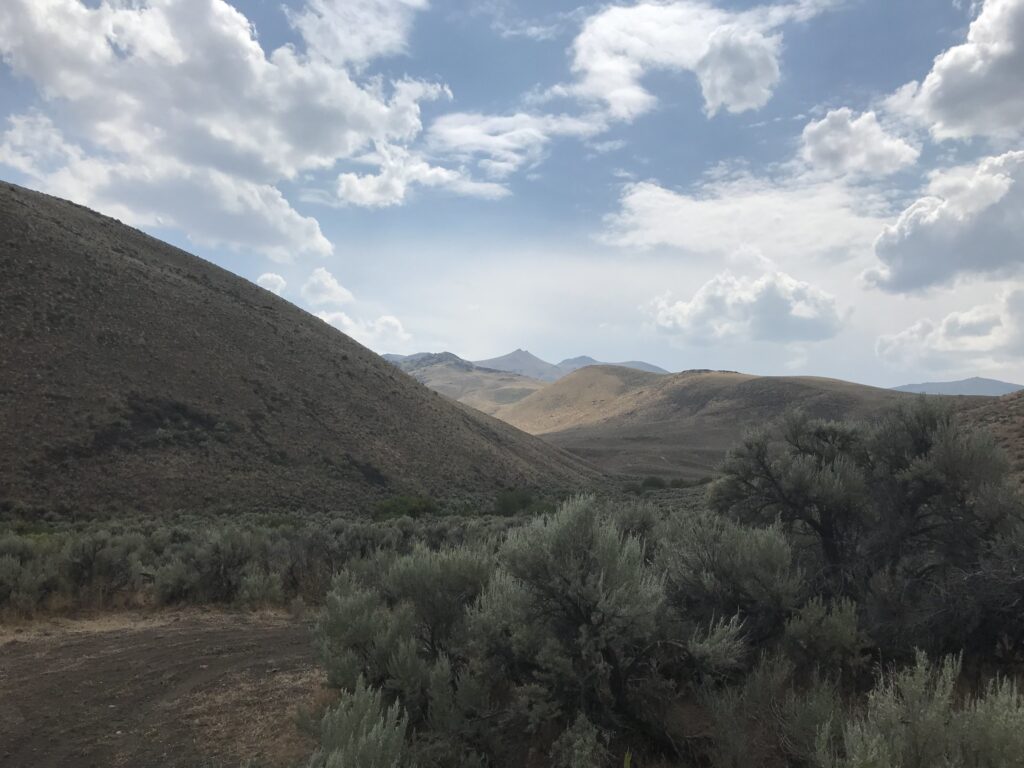Public lands in the Montana Mountains provide access to the Sheldon National Wildlife Refuge in northwest Nevada. (Bureau of Land Management photo)
The Bureau of Land Management will publish a final rule soon allowing the nation’s public lands to be leased for environmental protection, a Thursday news release from the Interior Department said.
The rule, which both proponents and detractors say marks a shift in the agency’s focus toward conservation, directs land managers at the agency to identify landscapes in need of restoration and to create plans to fill those needs.
It also creates two new types of leases focused on protecting natural areas. The BLM already leases parcels of land for extractive industries including energy development, mining and livestock grazing.
The rule is likely to set off a conflict in Congress, where Republicans immediately on Thursday renewed their criticism of President Joe Biden’s conservation policies.
In a deviation from the March 2023 draft rule that proposed a new category of conservation leases, the final rule will allow two new types of leases: restoration and mitigation.
Restoration leases will be “a tool for investment in the health of our public lands” an agency fact sheet reads. Lessees would be empowered to work to restore lands, including those impacted by other uses.
Similarly, mitigation leases would be a tool to offset the impacts of other BLM land uses. The agency said an example could be a solar power company that has a facility on BLM land may receive a mitigation lease to restore nearby habitat to mitigate the impact of its development.
The rule is in line with BLM’s multiple-use mandate that requires balancing energy development, mining, recreation and other uses on the nation’s public lands, the agency said.
“As stewards of America’s public lands, the Interior Department takes seriously our role in helping bolster landscape resilience in the face of worsening climate impacts,” Interior Secretary Deb Haaland said in a statement.
“Today’s final rule helps restore balance to our public lands as we continue using the best-available science to restore habitats, guide strategic and responsible development, and sustain our public lands for generations to come.”
BLM released a 178-page preliminary version of the rule Thursday, saying a substantially similar version would be published as a final rule “in the coming days.”
Congressional fight ahead
The rule has met with polarized reaction since the draft proposal was released in March 2023.
Reaction to the final rule from across the political spectrum began arriving within minutes of the announcement Thursday.
Conservation groups and environmental advocates cheered the rule for prioritizing conservation, while Republicans worried it would restrict other types of uses on public lands.
The Mountain Pact, a coalition of local leaders from Western states, released a statement praising the rule.
“The BLM’s Public Lands Rule highlights the need for the agency to work with local communities to focus on the conservation of land, water, and wildlife to ensure communities can protect future access to federal public lands while combating the growing impacts of climate change,” Patrice Horstman, the chair of the Coconino County, Arizona, Board of Supervisors, said in the statement.
David Willms, associate vice president for public lands at the National Wildlife Federation, said in a written statement the rule gives BLM “new tools to restore and conserve degraded lands, while supporting robust local economies. The rule will help the agency identify intact landscapes that wildlife depend on for survival, which will ensure that they thrive for decades to come.”
Democrats in Congress also applauded the measure.
Colorado’s Diana DeGette, the ranking member on the House Energy and Commerce Subcommittee on Energy and Climate, called the move “a significant accomplishment for land conservation and wildlife protection.”
“I am proud that BLM and the Biden Administration are continuing to lead in defending our natural world,” she said in a statement.
Pledge to repeal
But Republicans including Nort Dakota Sen. John Hoeven pledged to undo it.

U.S. Sen. John Hoeven, R-N.D. (Provided)
Wyoming Sen. John Barrasso, the top Republican on the Senate Energy and Natural Resources Committee, promised he and Hoeven would challenge the rule with a resolution under the Congressional Review Act. The law allows lawmakers to try to repeal executive branch rulemaking.
“Congress has mandated that taxpayer-owned lands be available for grazing, energy production, recreation and other uses, which is particularly important in North Dakota and other western states that depend on access to federal lands,” Hoeven said in a statement. “The Biden administration’s public lands rule would lock away federal lands in direct conflict with the longstanding multiple use law, which is why Senator Barrasso and I will introduce legislation to stop this onerous rule.”
The closely divided U.S. Senate has approved Congressional Review Act resolutions on environmental and agricultural issues in which rural-state Democrats or those in tough reelection races, such as centrist West Virginian Joe Manchin III, Ohio’s Sherrod Brown or Jon Tester of Montana, align with Republicans.
Republicans on the U.S. House Natural Resources Committee approved a bill, sponsored by Utah Republican John Curtis, last year to block the rule from taking effect. The legislation has not received a vote from the full House.
“This rule from the Biden Administration undermines the very people who rely on our federal lands for ranching, grazing, recreation, and beyond,” Curtis said in a Thursday release.
House Natural Resources Chairman Bruce Westerman of Arkansas said Thursday he would do “everything in (his) power” to get Curtis’ bill through the House.
GET THE MORNING HEADLINES DELIVERED TO YOUR INBOX
The post BLM to finalize rule allowing federal leases targeted at protection of natural areas appeared first on North Dakota Monitor.
